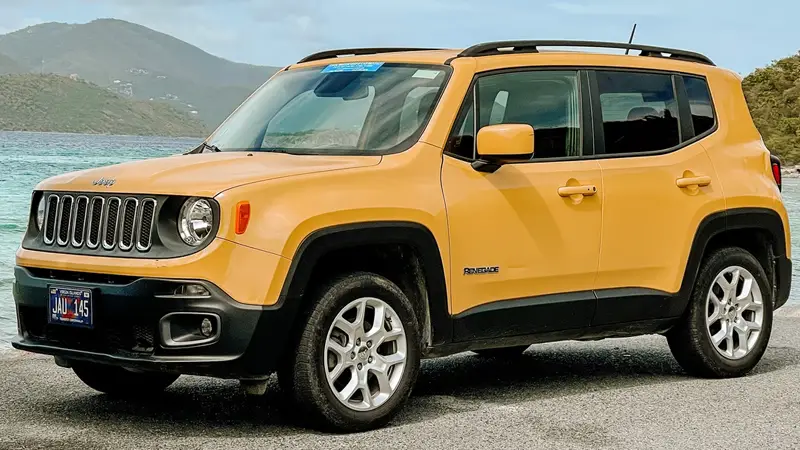Most modern cars have a feature that allows you to start smoothly after stopping on an incline, and it comes in-built, or you can add it as an extra feature. Hill assist is the feature that makes things easier, and part of using it well is knowing how long it should hold after release.
After releasing the brake pedal, hill assist should hold for a few seconds to allow your leg to switch to the accelerator or gas pedal. It might not seem like a lot of time, but it is adequate for you to make the switch without rolling backward.
This article considers whether brake assist and hill assist are the same. I also look into how long hill assist should hold after release, if it is important, and whether you can disable it.
Is Brake Assist the Same as Hill Assist?

Brake assist is the response to a 90s discovery of how many people did not slam the brake pedal fully (to the floor) even during a panic stop. As a result, their cars had more avoidable collisions.
During emergency stops, brake assist provides additional braking power to your vehicle. When trying to avoid a crash, your reaction time does not always conform to the speed with which you need to react. Thankfully, brake assist steps in to help.
It has electronic sensors that note the force and speed you used to step on the brake pedal. The brake assist then adds extra pressure to the pedal, pushing it to the floor for maximum effect.
When you ease off the brake pedal slightly, the brake assist will also decrease its pressure on the brake pedal. It does not automatically stop your car, so keep your foot on the brake pedal if you need to engage your anti-lock brakes.
In contrast, hill assist or hill hold or hill start assist control (HAC) maintains the last pressure you applied to your brakes to keep your car from rolling backward after resting on a slope. It does not increase the pressure on your brakes like brake assist.
As soon as the HAC system detects your intention to drive off—engaging the acceleration pedal–it decreases the braking pressure to allow you to drive off. Some cars do not activate the HAC when the electronic stability control (ESC) malfunctions, but it starts even when the ESC is off.
By using sensors and brakes, it keeps your car stable for some seconds as you scramble to switch from braking to accelerating after stopping on an incline—a red light or bumper-to-bumper traffic.
How Long Should Hill Assist Hold after Release?
After your car’s sensors communicate with the ECU, it interprets the data and decides when to hold the brakes. Torque sensors, angle sensors, brake actuator, and wheel speed sensors provide the data for the ECU.
The ECU considers the hill’s angle and your car’s weight, then applies the requisite pressure to hold your car in position before it speeds uphill. When you release the foot brake pedal, HAC steps in to maintain the brake pressure for about two to five seconds.
Even though the duration ranges from one car model to another, it usually falls between two to three seconds. In these few seconds, you can press the gas pedal without panicking about whether your car will roll backward.
Of note, most hill start assist systems fall into one of three categories, depending on your manufacturer and model. They vary according to the sensors they include, and the categories are:
- Basic hill start assist systems
- Medium-level hill start assist systems
- Premium-level hill start assist systems
The higher systems have more sensors that increase the range of duties the hill start assist can provide. For example, the hill-decline sensor in the premium level category allows for reversing when your vehicle stops at a downhill angle.
Is Hill Assist Important?

Hill assist provides convenience and extra protection against the risk of collision or accidents, so it is useful. Whether it is important will depend on your preference and your location, and it may be necessary if you:
- Live around or regularly visit areas with steep-sloped roads
- You are an amateur driver or a driver who finds it challenging to navigate multi-level parking with ramps or underground parking.
- Drive on flyovers that have constant stop-and-go traffic.
- Use a modern automatic car with more torque—they have more slippage, and it may not be easy to maneuver steep inclines without hill assist.
Hill assist reduces your driving fatigue by eliminating your need to always juggle your clutch, handbrake, gear, and acceleration on all the hills in your location. It also prevents wear and tear of these car parts that have to take part in keeping your car from rolling backward constantly.
Can You Disable Hill Start Assist?
While many vehicles provide the option to disable hill start assist, some cars do not have it. This poses a problem for drivers who would rather use their manual approach or pre-conditioned maneuvers without the interference of hill start assist.
Hill start assist also reacts too strongly in some cars or refuses to release the brake even after stepping on the gas pedal. Although such vehicles may benefit from a ‘disable button,’ they might not have it.
If you have a Ford Transit, you can disable your hill start assist by doing this:
- Look at the control panel on the driver’s side of your dashboard
- Identify the Vehicle Dynamics Control (VDC) mode switch.
- Hold down the VDC switch until you see the VDC OFF light come on.
- The OFF light will change colors from green to yellow before going off.
- Once it is off, your hill start assist won’t function.
The light stays yellow for about eight to 12 seconds before going off. If you disable the HAC on your Subaru, there will be a persistent warning light on your dash, which could be annoying.
You can always head to your car dealership to enquire about disabling the HAC if it bothers you. Even if there is no disable button, they might offer tips to help you manage the issues or fix any glitch.

